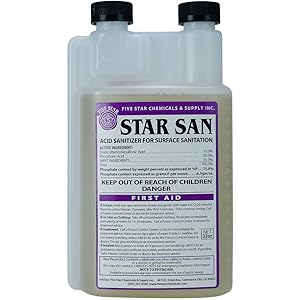Understanding Barleywine Aged
Barleywine aged refers to the process of maturing barleywine beer in various types of barrels or containers to enhance its flavor profile and complexity. This aging process can significantly influence the beer’s aroma, taste, and overall character, making it a sought-after choice among craft beer enthusiasts. The aging period can vary, typically ranging from several months to several years, depending on the desired outcome and the specific barrels used.
The Importance of Barrel Selection
The choice of barrel is crucial in the aging process of barleywine. Different types of barrels, such as bourbon, rum, or wine barrels, impart unique flavors and aromas to the beer. For instance, bourbon barrels can add notes of vanilla, caramel, and oak, while wine barrels may contribute fruity and tannic characteristics. The interaction between the beer and the wood can create a complex flavor profile that evolves over time, making each batch of barleywine aged a unique experience.
Flavor Profiles of Aged Barleywine
Barleywine aged beers often exhibit a rich and robust flavor profile that can include notes of toffee, dark fruits, and roasted malt. The aging process allows these flavors to meld and mature, resulting in a smoother and more refined drinking experience. Additionally, the alcohol content in barleywine, which typically ranges from 8% to 12% ABV, can also mellow during aging, contributing to a more balanced and enjoyable flavor.
Oxidation and Its Effects
Oxidation is a natural part of the aging process for barleywine. While excessive oxidation can lead to undesirable flavors, a controlled amount can enhance the beer’s complexity. This process can introduce sherry-like notes and deepen the overall flavor profile. Understanding the balance of oxidation is essential for brewers aiming to create high-quality barleywine aged beers that appeal to discerning palates.
Common Aging Techniques
There are several techniques brewers use to age barleywine effectively. Some may choose to barrel-age their beer, while others might opt for bottle conditioning, where the beer is aged in bottles with added sugar and yeast. Each method has its advantages and can lead to different flavor outcomes. Barrel aging typically provides a more pronounced wood influence, while bottle conditioning can enhance carbonation and mouthfeel.
Get more content like this!
Sign up to receive updates and new terms first hand.
Food Pairing with Aged Barleywine
Aged barleywine pairs exceptionally well with a variety of foods, making it a versatile choice for beer enthusiasts. Its rich flavors complement hearty dishes such as braised meats, rich stews, and strong cheeses. Additionally, desserts like chocolate cake or caramel flan can be enhanced by the sweet and complex notes found in barleywine aged beers, creating a harmonious dining experience.
Storing Aged Barleywine
Proper storage is essential for maintaining the quality of barleywine aged beers. Ideally, these beers should be stored upright in a cool, dark place, away from direct sunlight and temperature fluctuations. This helps prevent oxidation and preserves the beer’s intended flavor profile. Some enthusiasts even recommend aging barleywine in their cellars for optimal results, allowing the flavors to develop further over time.
Popular Barleywine Aged Brands
Several breweries have gained recognition for their exceptional barleywine aged offerings. Brands like Sierra Nevada, Dogfish Head, and Founders Brewing Co. have produced highly acclaimed barleywines that showcase the artistry of barrel aging. These breweries often experiment with different barrel types and aging durations, leading to unique and sought-after releases that excite beer aficionados.
Conclusion on Barleywine Aged
Barleywine aged is a fascinating aspect of the craft beer world that highlights the importance of aging techniques and barrel selection. With its rich flavors, complex aromas, and potential for unique pairings, aged barleywine continues to captivate beer lovers and remains a staple in the craft brewing community. As more breweries explore this aging process, the variety and quality of barleywine aged beers are sure to expand, offering even more options for enthusiasts to enjoy.




